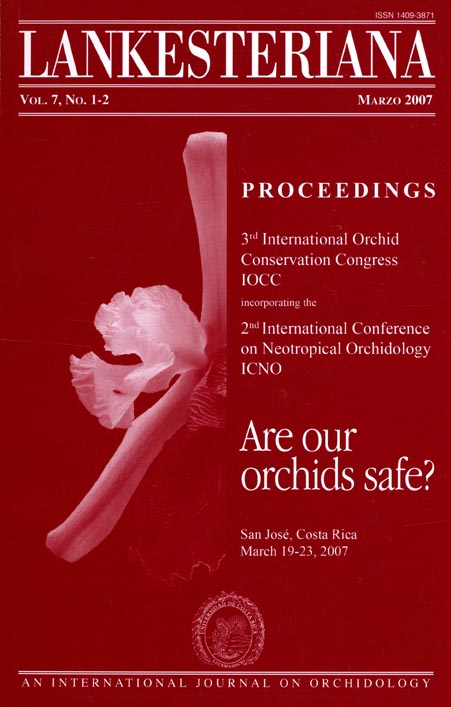Orchid biogeography and rarity in a biodiversity hotspot: the Southwest Australian floristic region
DOI:
https://doi.org/10.15517/lank.v7i1-2.18445Keywords:
pollinators, mycorrhiza, rarity, conservation, edaphicAbstract
Understanding the drivers of orchid diversification and rarity may prove crucial to their conservation. The Orchidaceae is characterised by the presence of mycorrhizal endophytes and a diversity of pollination syndromes (Rasmussen 1995, Jersakova et al. 2006). The prevalence of pollination by deceit and the spe- cialised mycorrhizal relationships in some taxa have been implicated in the diversification of the family (Cozzolino & Widmer 2005, Otero & Flanagan 2006). Furthermore, interactions with habitat speciali- sation may act in concert with these attributes to play a critical role in orchid diversification (Gravendeel et al. 2004). The influence of these factors in determin- ing intrinsic rarity in orchids remains poorly known.
Downloads
Downloads
Published
How to Cite
Issue
Section
License
According to the Open Access policy promoted by the University of Costa Rica, all the papers published by Lankesteriana are licensed under the Creative Commons copyright and can be downloaded free of charge. The journal holds copyright and publishing rights under the CC BY-NC-ND 3.0 CR license.
Before the publication of the materials submitted by the author(s) in LANKESTERIANA, the author(s) hereby assign all rights in the article to the Lankester Botanical Garden.





